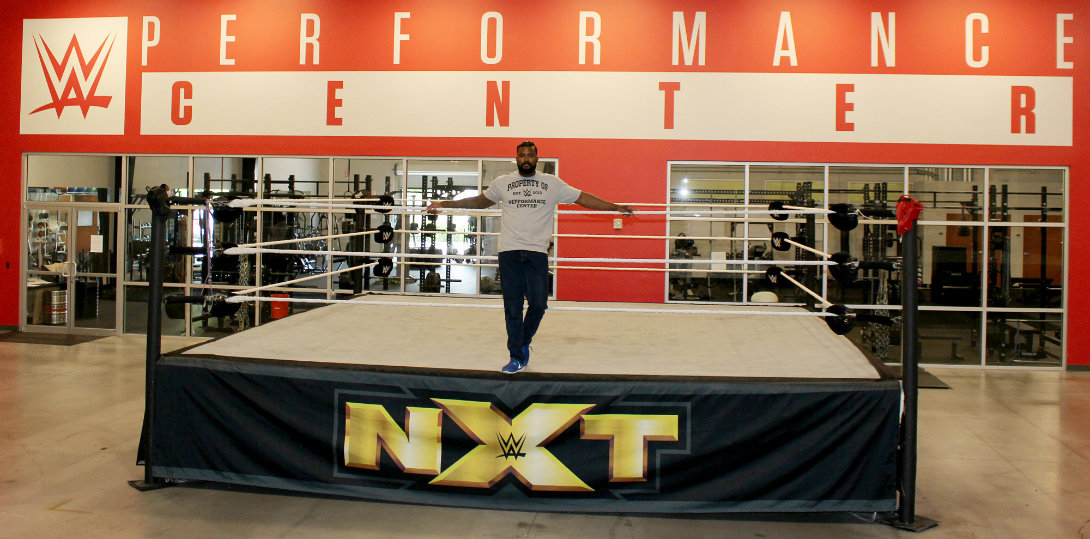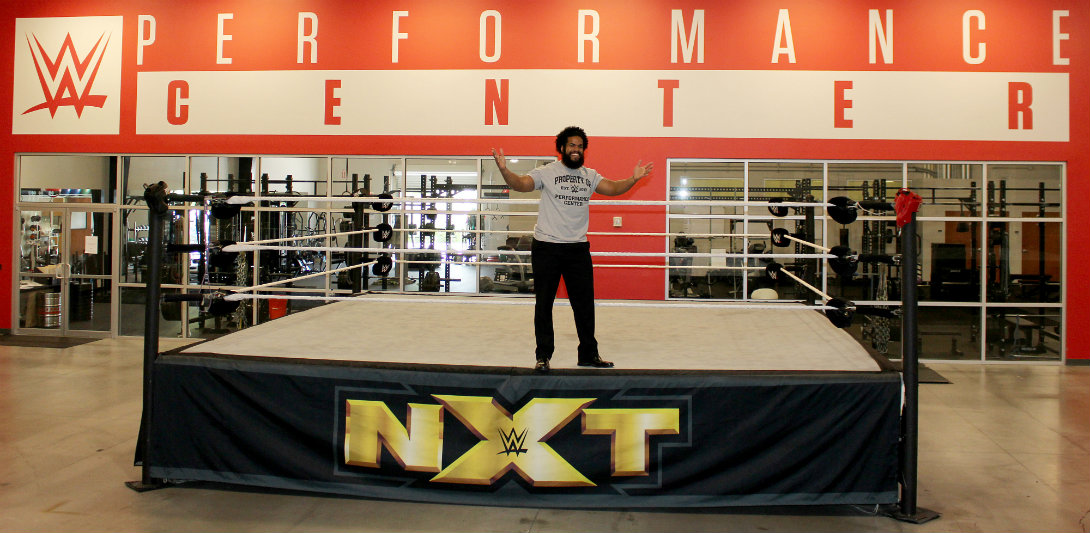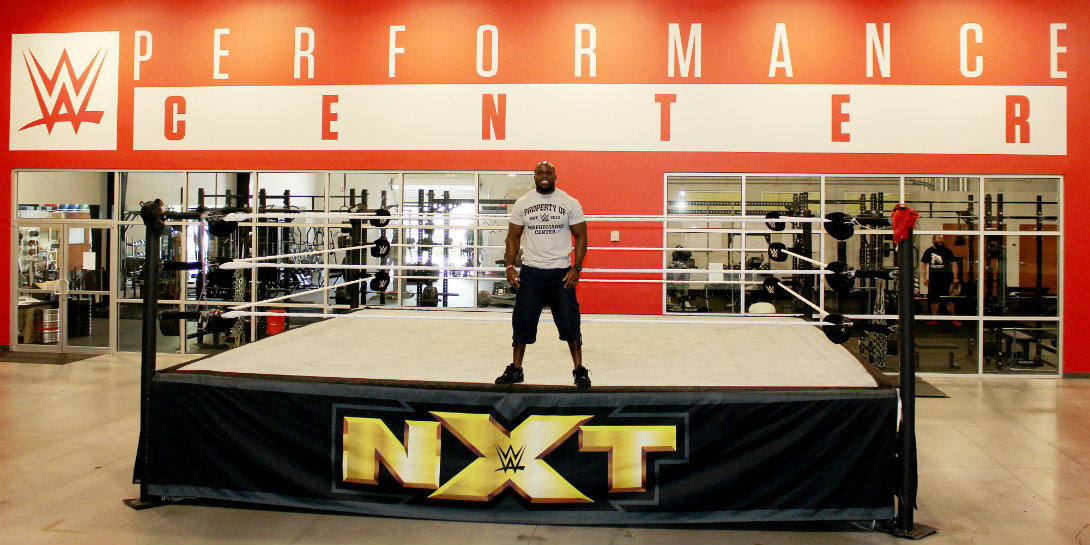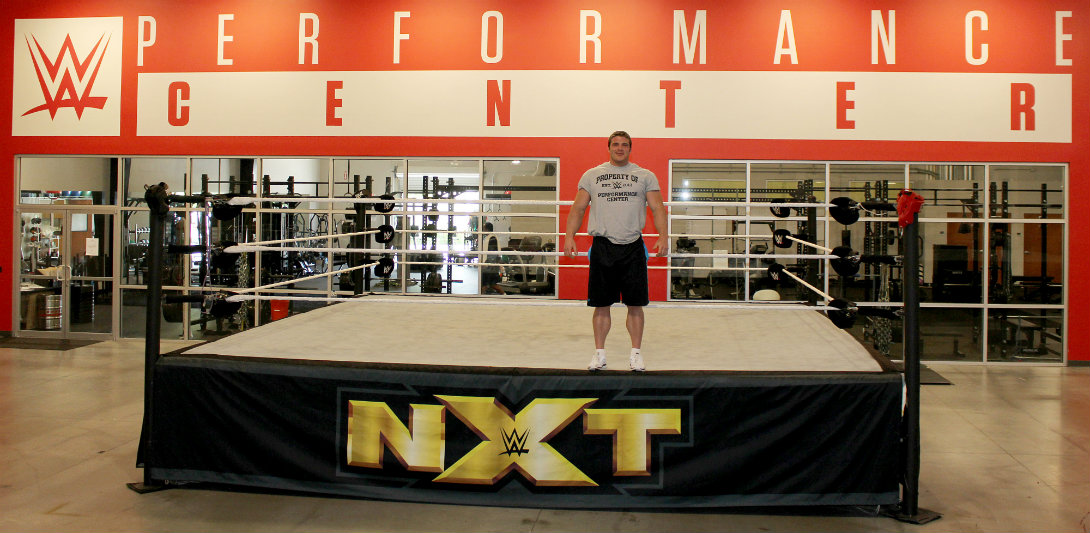28-Days-to-Lean Meal Plan
With the right plan and the right discipline, you can get seriously shredded in just 28 days.
Read article
A few months ago, M&F Training Director, Sean Hyson put his neck on the line when we threw him into the ring for an undercover WWE tryout.
Along with spending three days in the ring with William Regal and a slew of other professional trainers, he also got a chance to shoot his promo reel using his alternate persona “Mr. Cool.” It was all very exciting, and WWE released a video series, article and gallery chronicling the whole journey from their perspective. And while Sean didn’t go on to begin a new career as a WWE Superstar, a few of the guys he trained with made the cut. They, along with seven other talented tough guys and gals comprise the new, international class of recruits.
While their journey has led them all to the same place, their backgrounds are anything but similar. Among them are former collegiate athletes, bodybuilders and talent from the independent wrestling circuit, from seven countries. All have begun training at the WWE Performance Center in Orlando, Florida — home of NXT, the developmental division for WWE.
With seven training rings, a world-class strength and conditioning program and cutting-edge edit and production facilities, the Performance Center will allow the new class to hone their skills through a comprehensive program that includes in-ring training, physical preparedness and character development.
“The global reach of WWE is reflected in the diversity of this class of NXT recruits,” said Paul “Triple H” Levesque, WWE Executive Vice President, Talent, Live Events & Creative. “Talent is the most important natural resource we have, and these individuals will have every opportunity to hone their skills and fulfill their dream of becoming a WWE Diva or Superstar at the WWE Performance Center.”
Muscle & Fitness caught up with four members of the new NXT class to get their perspective on what it takes to become the next WWE Superstar.

M&F: How has your training in the Marine Corps helped you in your quest to become a WWE Superstar?
KC: Training in the Marines Corps and WWE are very similar. In the United States Marine Corps there is a mental and physical awareness. The USMC prepared me in both aspects because of the constant readjusting, learning new tasks, and executing them quickly, correctly while remaining consistent.
What was the most challenging thing about your WWE tryout?
Making sure my fatigue didn’t hold me back from showing who I really was. When you’re taking part in the drills and executing the holds and bumps, fatigue can become a factor and it takes your mind off the task at hand. But it is the question of, “how bad do you want it?” And that is what always brings me right back to the surface.
What’s the most important skill or talent you need to be successful in the ring?
Making sure your personality and character connects with the millions of fans in the WWE Universe. Be confident in yourself. Everyone is unique, and it is up to you to show the coaches and fans you have that “it” factor. You have to be willing to search, find it and bring it out for the world to see.
What’s it like training at the performance center?
Hands down the best facility in the world. No discussions. We have everything we could ever need right here under one roof. Now it is up to us to take advantage of it and make the most of our opportunity. We have the ability to work on our in-ring skills with seven training rings, our physical appearance through the world-class strength and conditioning program and our character development in one of the production suites. If you can’t succeed here, you won’t succeed anywhere.
Which WWE Superstar do you most look up to and try to emulate, and why?
Brock Lesnar. He has a presence and ring awareness that is second to none. Add that to his strength, endurance and size and you have the “The Beast Incarnate.”
What memory do you have of M&F fitness director, Sean Hyson during tryouts at Performance Center?
He brought a ton of heart and fought through everything, which I admired about him. He did seem to struggle a little bit with his rolls though (laughs).

M&F: Not many WWE Superstars are proficient in dance such as yourself. How will you use that to your advantage moving forward as a WWE Superstar?
LV: In ballroom, I learned about body awareness, body control and how to be a visual learner. I incorporate this while training to make sure I take care of myself and whoever I’m in the ring with. Also, don’t be surprised if I throw in a few dance moves from time to time.
What persona would you most like to take on as a WWE Superstar?
The exact persona I can’t quite say at this point in time. However, I would like to be a character with many dimensions and someone who has great range in emotion. In this business, you have to constantly evolve and be open to recommendations and criticism. WWE is built on larger-than-life characters that tell compelling stories and put smiles on people’s faces. If I can do that I will be happy.
What’s been the hardest part about the tryouts?
All the cardio drills that we had to do. If you can imagine, there are seven rings in a room and we would have to do a drill, run to the next, and so on and so forth. You had to have a lot of heart and dedication to make it through those three days.
What advice would you give to someone who’s considering trying out for the WWE?
Don’t let small roadblocks get in your way of accomplishing your dream. In this business, you have to understand that you are a specific piece of a huge puzzle. For anyone that does make it, never stop learning and as The Rock would say, be humble, be hungry, and always be the hardest worker in the room.
What’s your ultimate goal as a WWE Superstar?
I like to think in terms of baby steps. Step one was to make it past the tryout process, as a recruit in NXT. Thankfully I accomplished that. Ultimately, the sky’s the limit.

M&F: How has your athletic background help with your WWE training at the Performance Center?
SU: Coming into the Performance Center with an athletic background can be a huge advantage. In my case, I found it easier to pick up certain things after they are demonstrated to me. In regards to the physical training, I found my athletic background a huge help in the gym since I was already familiar with a lot of the exercises we need to do.
What’s been the best part of your experience during the tryouts?
The best part for me was the knowledge I received from the coaching staff. The group of men and women they have assembled, and the experience they bring to everybody is invaluable moving forward. I just want to be a sponge and absorb as much information as possible, to put myself in the best position to succeed moving forward. It is also surreal walking into the WWE Performance Center everyday as my office. With 26,000 square-feet, seven training rings, a world class strength and conditioning program and cutting-edge production facilities we can work on our in-ring skills, physical training and character development all under one roof.
Who do you think would be the most difficult man to defeat in the ring, and why?
Brock Lesnar, simply because the man is a beast! He is a once-in-a-lifetime athlete, and one I would be honored to share the ring with someday.
What’s a typical diet/meal plan look like for you while you’re training?
Before our morning session, I’ll usually eat a breakfast consisting of several egg whites, low sodium turkey bacon and some hash browns depending on how I feel that day. Early in the afternoon I’ll have some kind of meat, chicken or fish with white rice. Following our afternoon workout, I’ll carb up again with white rice and a source of protein. Later in the evening I stick to low carbs and green veggies while having protein shakes in between all my meals. All of my meals are cooked in coconut oil, which is a great source for good fats.
What gets you the most pumped to do battle in the ring?
Some good music! Listening to music before any kind of physical activity always gets me in the zone to where I know it’s go time.

M&F: How has your bodybuilding background benefited your quest to becoming?
TK: It helped me achieve the physique, size and strength that is necessary to be a WWE Superstar. That is really where the comparisons end because being a WWE Superstar is quite different than being on stage in a bodybuilding competition. Performing in the ring is much more difficult because you not only have to show your physique, but also connect with the crowd and tell a story through your in-ring movements.
What are some of your favorite lifts to build strength for the ring?
I have always enjoyed building my size from the bottom up. Squats and deadlifts are often hard exercises especially for those that are tall. I also try to keep myself balanced, so my upper body can match and my shoulders are a strong point.
What’s been the most rewarding experience you’ve had during the tryouts?
One of the most rewarding experiences has been learning something new every day that I didn’t think I could do before. I never thought I would be athletic enough to perform in the ring but working with the coaches and taking advantage of all the resources the WWE Performance Center has to offer has just been a great experience overall.
What three things do you most need to succeed as a WWE Superstar?
No. 1: A personality/character that can evoke a reaction from the crowd whether it be cheers or boos. The last thing you want as a WWE Superstar is to hear silence. No. 2: It’s important to work well with your fellow superstars because WWE/NXT is not just a team, it is a family. You hold the safety of your opponent in your hands during a match and that is not something to be taken lightly. No. 3: Finally, you need to be much more than just an athlete, you have to be the total package to be a WWE Superstar.
What’s your ultimate goal as a WWE Superstar?
I want to be inspiring and put smiles on fans faces when they watch me perform. I want to be remembered as one of the all-time greats, not only inside the ring but outside as well.
Notifications